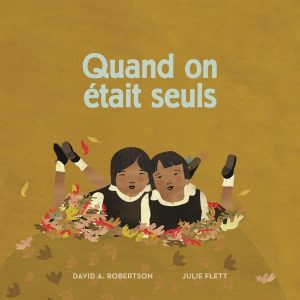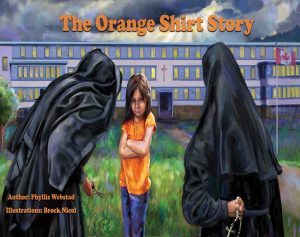The remains of 215 Indigenous children were found at Kamloops Indian Residential School this past week. Every child found was a brother, sister, daughter, son, grandchild, and important member of their family. Every child found loved and was loved by their family. Every child found was taken from their home and stripped of their culture and dignity. Tk’emlúps te Secwépemc First Nation is working with the coroner’s office to determine the causes and timings of their deaths, which is currently unknown. What is known, is that no one from the school, community or government documented these deaths. It is a grave reminder that many people knew the horrors of abuse and disease that was going on at residential schools across Canada and no one stopped it. Not a member of the community, the government, a chief medical officer, a teacher or mayor stepped in to stop this horrifying situation for 150, 000 innocent children and their families. It is imperative that we share these stories so every student in Ontario knows this history and can become an advocate for Indigenous rights in Canada.
A couple of years ago, I was sitting at an outdoor theatre with my aunt watching Charlottetown’s Confederation “Centre Young Company” perform a musical that told stories from all around Canada. At the conclusion of the performance, my aunt turned to me with a surprised look on her face and said, “I didn’t know that happened.” She was referring to the powerful song, written and performed by a very talented young man from Nunavut who spoke of the intergenerational trauma of residential schools. I was incredibly surprised that my aunt had not been aware of the cultural genocide that happened at residential schools but soon realized that through conversation that she was never taught it in school and had never heard about it in other areas of her life. As our conversation continued, I saw the transformation in thoughts about our Indigenous peoples as education and the arts can do.
As educators, it is imperative that we do not have more children graduate from our schools not knowing the harm that was caused by residential schools and the history of Colonialism which is still very much ingrained in our current educational and child welfare systems in Canada.
To support teaching about residential schools, there is a Bookstore in Toronto called GoodMinds. This bookstore is First Nations owned and operated. Below, I have highlighted different books that can introduce and continue to tell the horrific history of residential schools in Canada. It is important as educators that we are teaching our students that as settlers, we all have a responsibility to learn the history and advocate for our Indigenous peoples.
Primary:
When We Were Alone/Quand on était seuls by David A. Robertson and Julie Flett
This book is a very gentle introduction to the concept of residential schools that can be read to children as young as Kindergarten. The young girl asks her grandmother, Kokum, about her brightly coloured dresses, long braided hair, Cree language, and about the times when she was a young girl. Kokum tells her about her experiences attending a residential school for a number of years as a child in a way that her granddaughter can understand.
Shi-Shi-etko/Shi-Shi-etko by Nicola I. Campbell
Shi-shi-etko is a picture book about an Interior Salish child with just four more days at home until she goes to residential school. She takes time to explore her environment and spends quality time with her family. The illustrations are beautiful and conveys the connection to one’s community. Although the book is the final days at home before departing, residential schools are only mentioned on the introductory page.
Junior:
I am Not a Number/Je ne suis pas un numéro by Jenny Kay Dupuis (Ojibwe) and Kathy Kacer
This is a dual language book in English or French and Nibisiing. Nibisiing was the language that Irene was not allowed to speak at the residential school where she was forcibly sent by the “Indian agent”. The book I am Not a Number tells the story of Irene Couchie Dupuis and her horrible and frightening experiences of being in the residential school system. The book is written by her granddaughter Jenny Kay Dupuis.
The Orange Shirt Story/L’histoire du chandail orange by Phyllis Webstad (Northern Secwepemc (Shuswap) from the Stswecem’c Xgat’tem First Nation (Canoe Creek Indian Band)
The Orange Shirt Story by Phyllis Webstad explains the truth behind Orange Shirt Day held each September 30th. This book describes the sadness Phyllis experienced being away from her family and the cruelty she experienced in the residential school system in Canada.
Intermediate:
Residential School. With The Words and Images of Survivors by Larry Loyie(Cree)
This book honours the survivors, the former students, who attended residential schools. It offers a first-person perspective of the residential school system in Canada, as it shares the memories of more than 70 survivors from across Canada.
The trauma inflicted by residential schools is still very much a part of the lives of many of our Indigenous peoples across Canada. Below is a plea from Kelly Fraser, an outstanding Inuk musician, who spoke about the call to action for all Canadians before her tragic passing in 2019.
“Both my mothers are residential school survivors, both their father’s dogs were taken away and killed so they couldn’t go dog sledding to get their food to feed their family. TB/influenza caused our people to convert to Christianity and let go of their culture (drum dancing, tattooing, throat singing, shamanism…etc) because the priests were the only ones with the medicine and I’m not here to say being a Christian is not right, I believe in the freedom of believing what you want to and I respect ALL religions. The Mounties were sent by the government to take away our kayaks and made my family walk thousands of kilometers to a new settlement where they were told there would be houses when there weren’t any. I believe we can rise above what has happened to us by telling each other to please find healing and help by elders, mental health workers, there’s the internet where we can learn to meditate, learn about our culture and reach out and help each other heal. Its time for us ALL people to also call onto the federal/provincial/territorial/municipal governments to give us food that is affordable, programs that will help us heal, proper housing, proper education that allows us to go straight to college after grade 12 and proper healthcare by writing to them and calling them up, this is up to ALL Canadians too!!”





